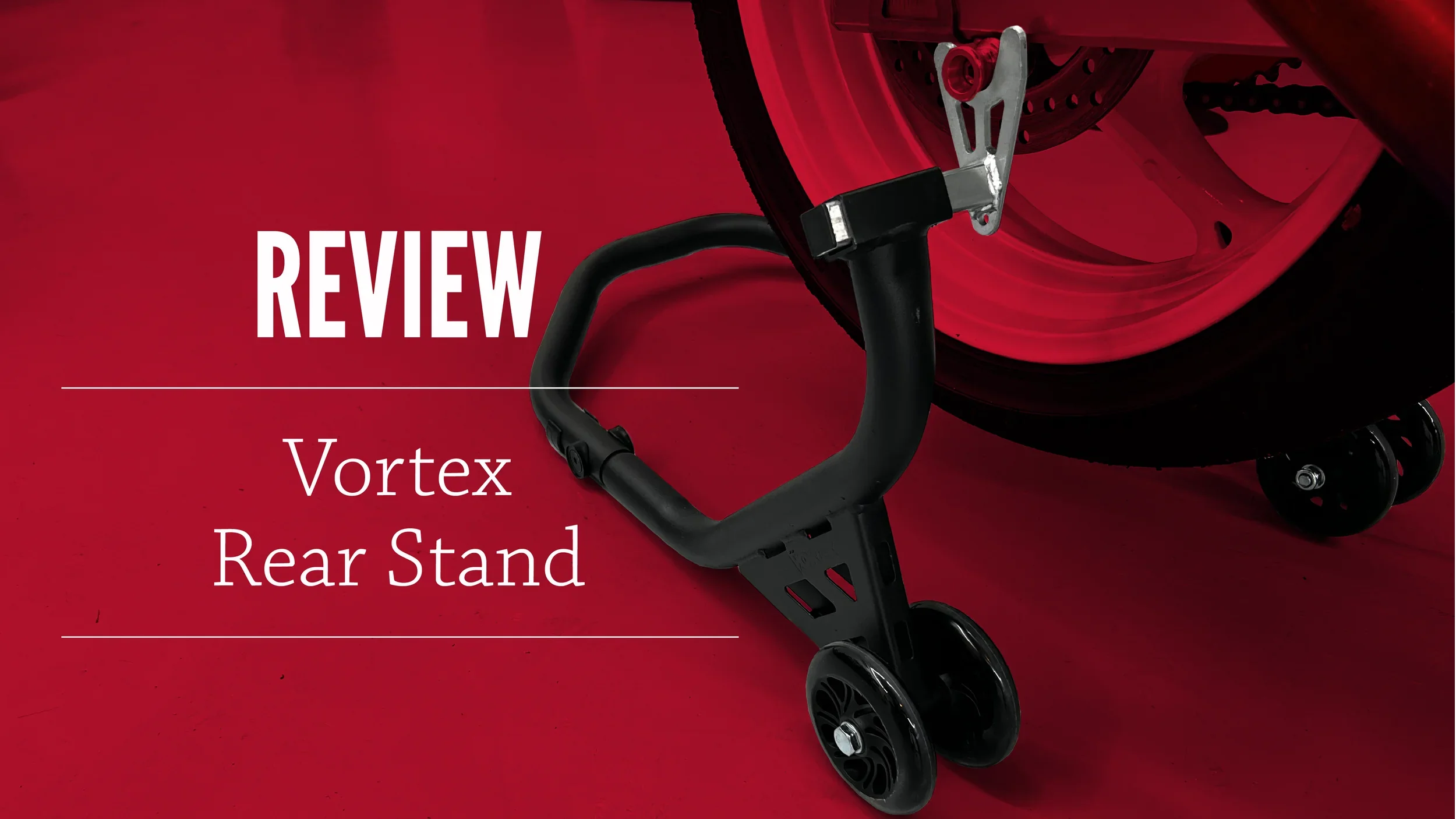
Vortex Rear Stand Assembly and Review
We make things that work better and last longer. Our products solve real problems with clean design and honest materials.
Maybe you’ve purchased a $100 rear stand and you’ve had enough of its clunky delaminating wheels, or better yet you’re resisting the urge and doing your due diligence. I have succumbed to the temptation of the seemingly similar item and regretted it—not initially, but eventually. I finally changed all that and ponied up—not considerably more—for a Vortex rear stand. Here’s how it the assembly and use went.
Our Experience with Vortex
I have had a front stand by Vortex for ages, so I know how useful and durable their stands are. I also use their racing gas cap on my track bike and wouldn’t hesitate to use their rear sprockets either. For just $50 more than the “equivalent” bargain brand, or even less on sale, I didn’t hesitate to purchase mine when I simply couldn’t stand another day clunking around on the dry-rotted wheels of my old stand.
Inspecting the parts
I were impressed by the size and construction of the wheels. When a stand’s wheels are too small, they will catch on surface imperfections and bring your progress to a halt, or worse yet, unexpectedly drop your bike off the stand. That won’t be a problem here as these measure nearly 4.5” in diameter. My old stand’s wheels were only 3” new and once the rubber dried out and fell off, more like 2.5”.
The construction uses reasonably thick 0.700” wall tubing with a durable satin black finish. Branding is discrete. There are no stickers applied to it whatsoever. Only the debossed brand name on the wheel supports gives away its source. Plastic clips are snapped to the hoop portion to minimize drag when repositioning the bike. Hardware included assembly screws with thread locker pre-aplied and molded plastic washers.
Assembly Ups and Downs
As you may have seen from the video, assembly was pretty straightforward. The Vortex stands come flat packed to save on shipping, so you will have to assemble them, but its money well saved in my estimation.
I began with connecting the legs to the hoop. The tapered end of the legs slid into place inside the ends of the hoop easily, with minimal free play. Placing the screws through the washers and lining up the threads was not a problem. Everything lined up properly.
Things were going smoothly until I got to the final phase; attaching the spool adapters. This problem would also rear its head months later. Like most rear stands, this one is adjustable for width to accommodate most any bike. I measured the spool width center-to-center, which fortunately for me is identical for both the SV and the Speed Twin at 12.5”. I slid the adapters into their square stock receivers (admittedly in the wrong orientation the first time) and spaced and centered them accordingly. These parts are not specific to one side or the other, but be aware they should be angled slightly rearward when properly positioned. As I tightened down the set screw for the second of the spool adapters with a not-too-excessive amount of torque applied to the bolt, the welds holding the screw to one of the legs snapped off. This didn’t happen on the opposite side and any less torque wouldn’t secure the adjustable carriers so this was definitely a manufacturing issue.
Surprised and disappointed, I immediately contacted our seller, Sport Bike Track Gear to alert them to the situation. Justin replied promptly, simply asking for pictures of the parts I had received and of the defect. He had Vortex directly ship us a replacement leg for our stand. Ten days later I was back in business, with a properly welded attachment nut.

















